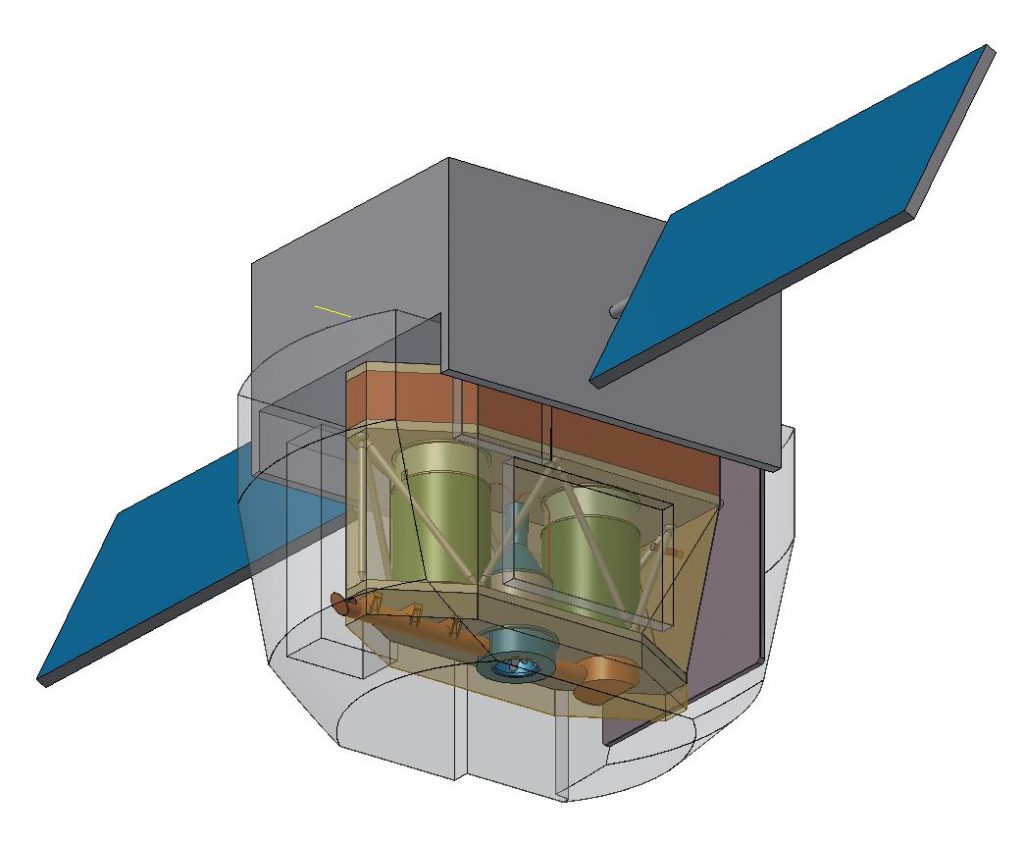Lead Organisation: University of Edinburgh
Project Lead: Paul Palmer
Partners: University of Leicester, Airbus Defence and Space, UK Astronomy Technology Centre (STFC), Selex
The Tropical Carbon Mission (TCM) will provide unique observations of CO2 over the tropics with the precision and frequency that are required by scientists and policy makers. TCM will be launched in a low-inclination orbit of 35 degrees, which will precess within tropical latitudes to maximize the frequency and coverage of cloud-free scenes over and downwind of tropical landmasses. The TCM comprises three instruments, building on current technology: 1) a short-wave IR (SWIR) multi-view spectrometer that will measure carbon dioxide (CO2), carbon monoxide (CO), methane (CH4), and oxygen (O2); 2) a co-boresighted aerosol imager; and 3) a wide-view cloud imager.
The primary science objective of TCM is to reduce the overall uncertainties in the magnitude and distribution of tropical CO2 fluxes, to determine with certainty whether in any particular two-week period the tropics is a net source or sink of CO2. By better estimating tropical fluxes, it will also improve the efficacy of existing surface measurement networks to help estimate extra-tropical CO2 fluxes. The secondary science objectives of TCM are to: 1) reduce the uncertainties in the magnitude and distribution of CO and CH4; and 2) improve source attribution of observed variations in CO2 by using concurrent measurements of CO and CH4.
The main aims of the CEOI project are: 1) to develop a concept that fits the ESA Earth Explorer criteria; 2) to develop a mission concept that delivers a step-change in scientific understanding of the carbon cycle; 3) to develop an engineering solution that demonstrates innovation but with some heritage; and 4) to deliver a competitive and compelling mission concept.

S platform
However, given the constraints of the EE-9 opportunity, which were not fully known until March 2016, it was decided to develop the project for future ESA opportunities. The project therefore improved the science and technology readiness of the TCM mission concept to maximize its chances of being shortlisted for a future ESA phase A study for a larger mission. The main activities have been: 1) revised science objectives/capability of the mission concept based on a unique high-resolution NASA climate simulation; 2) development of an innovative multi-angle viewing concept, to decrease the systematic error of XCO2 retrievals due to atmospheric aerosols; 3) assessed and improved TRL values for all critical technologies associated with TCM; and 4) developed and improved design of the GHOST SWIR spectrometer for a space-borne application that would fit into a Vega dual launch configuration.
